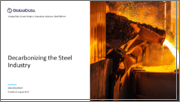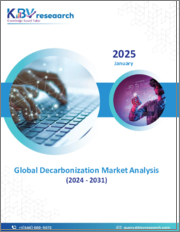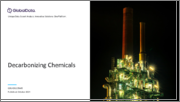
|
시장보고서
상품코드
1562522
철강업의 탈탄소화Decarbonizing the Steel Industry |
||||||
철강은 전 세계 온실가스 배출량의 8%를 차지하고 있어 감축이 어려운 산업으로 꼽힙니다. 철강 수요는 2022년부터 2050년까지 30% 이상 증가할 것으로 예상되며, 2050년까지 넷제로스틸 이니셔티브(NZI)의 목표인 넷제로를 달성하기 위해서는 대대적인 변화가 필요합니다.
철 스크랩의 가용성은 증가할 것으로 예상되지만, 2차 가공(재활용)은 세계 철강 수요를 충족시키지 못할 것으로 예상됩니다. 비용 효율적인 해결책으로 제철의 일반적인 효율성 향상이 제안되고 있지만, 이는 배출량을 소폭 감소시키는 데 그칠 것입니다. 의미 있는 배출량 감축을 달성하기 위해서는 화력 발전에서 벗어나야 합니다.
철강업의 가치사슬에서 가장 탄소 집약적인 단계는 제철입니다. 1차 제철을 탈탄소화하기 위해 제안된 기술로는 탄소 포집, 이용 및 저장(CCUS), 철 직접 환원(HDRI)에서의 수소(석탄 대체), 전기분해 등이 있습니다. 그러나 '그린스틸'을 생산하는 이러한 방법들은 비용 경쟁력에 어려움을 겪고 있어 도입이 저조한 상황입니다. 넷제로 목표를 달성하기 위해서는 이러한 기술의 도입을 가속화해야 합니다.
전기분해는 아직 상업적 규모로 입증되지 않았고, CCUS는 높은 자본 비용으로 인해 철강업체들은 신중하게 접근하고 있으며, HDRI는 가장 발전된 기술로 여겨지고 있으며, 그린스틸 프로젝트의 대부분을 차지할 것으로 예상됩니다. 그러나 수소 인프라의 부족과 수소의 미래 평준화 비용에 대한 불확실성이 여전히 과제로 남아있습니다.
이러한 새로운 생산 방식이 비용 경쟁력이 높아짐에 따라 향후 수십 년 동안 석탄에서 HDRI와 전기분해로 전환이 가속화될 것으로 예상됩니다. 이 과정은 CBAM과 같은 정책과 녹색 철강 구매를 약속하는 기업들에 의해 가속화될 수 있습니다.
이 보고서는 세계 철강업의 탈탄소화를 조사하고, 세계 철강 생산 동향과 철강 부문의 배출량, 각 분야의 탈탄소화를 위한 주요 기술 개요, 주요 기업, 정책 및 이니셔티브에 대해 논의합니다.
목차
주요 요약
- 세계의 철강 업계
- 세계의 철강 생산 최근 동향
- 철강 업계에서 탄소 배출량
- 철강의 배출 저감을 실현하기 위한 주요 기술
- 철강 업계의 탈탄소화 과제
- 2023년의 주요 철강 제조업체 배출량 실적
- 주요 정책과 대처
- 철강 밸류체인 전체의 배출량
- 광업 탈탄소화
- 재생에너지
- 전기화
- 광산 회사 전체에서 전동 LHD와 트럭 채용
- 제조업의 탈탄소화
- 철강 제조의 탈탄소화 기술
- 철강 제조의 저탄소 수소와 HDRI
- 철강용 저탄소 수소를 개발하는 주요 지역
- 철강 분야에 주력하는 주요 수소 개발 기업
- HDRI 사례 연구
- 철강 제조의 CCUS
- 철강업에 CCUS를 적용하는 주요 기업
- 전기분해를 통한 제조업의 탈탄소화
- 전기분해 사례 연구
- 철강 2차 제조업
- 2차 스트림 제조 사례 연구
- 제조업의 배출 저감 전략 평가
- 해운과 물류의 탈탄소화
Steel contributes to 8% of global GHG emissions and is considered a hard to abate industry. As steel demand is expected to grow by more than 30% from 2022-2050, major changes will be needed to achieve the Net-Zero Steel Initiative's (NZI) target of net-zero by 2050.
Although scrap steel availability will increase, secondary stream steelmaking (recycling) is not expected to meet global steel demand. General efficiency increases in steelmaking have been proposed as a cost-effective solution, however these only yield modest emission reductions. A departure from thermal power sources is required to achieve meaningful emission reduction.
The most carbon intensive stage in the industry's value chain is steel manufacturing. Proposed technologies to decarbonize primary steelmaking include carbon capture, utilization and storage (CCUS), hydrogen (to replace coal) in direct reduction of iron (HDRI) and electrolysis. However, these methods of producing "green steel" struggle to be cost-competitive and so adoption remains low. An accelerated introduction of these technologies will be needed to meet net zero targets.
Electrolysis has not yet been proven at commercial scale, and steel manufacturers have been wary of CCUS due to its high capital costs. HDRI is seen as the most developed technology and is expected to make up the majority of green steel projects. However, a lack of hydrogen infrastructure and uncertainty surrounding the future levelized cost of hydrogen remains a challenge.
As these new production methods become more cost-competitive, there will be a shift from coal to HDRI and electrolysis over the coming decades. This process has the potential to be sped up by policies such as CBAM or by companies making commitments to purchase green steel.
Current trends in global steel production and the sector's emission footprint. Overview of the key technologies for decarbonizing the sector across the mining, manufacturing and logistics segments of the supply chain, including low-carbon hydrogen, CCUS, electrification. In addition, the report discuses the key players, policies, and initiatives throughout.
Scope
- Steel production has steadily increased over time, rising by a CAGR of 3.2% between 1950 and 2023 according to the World Steel Association. This growth has been driven by the industrialization of different regions over time, with the economic rise of China and India over the time frame contributing strongly to the global growth of steel production.
- 95% of carbon emissions in the steel industry are due to the manufacturing process - the direct reduction of iron ore is a very energy intensive process, requiring high levels of heat for the oxygen to be displaced from the iron ore.
- Despite the potential efficiency increases and emission reduction associated with electrification, adoption of battery powered loading equipment within mining remains relatively limited, with GlobalData's 2024 Mine Site Technology Survey revealing that 46% of miners had not invested in battery/ electric powered mining vehicles at all, compared to 2.7% for full implementation and 9.6% for considerable investment in the technology.
- According to GlobalData Hydrogen Analytics, the capital expenditure of low-carbon hydrogen projects that will come online by the end of the decade and supply the steel sector amounts to $136 billion.
- CCUS capacity within the steel sector accounts for 1.22Mt/year, so significant investment would be needed for the technology to meaningfully curb the steel industry's emissions.
Reasons to Buy
- Identify the market trends within the industry and assess what the biggest players in steel production are doing to reduce emissions.
- Develop market insight of the major technologies used to decarbonize the industry, as well as the policy framework laid out by governments to support their adoption.
- Facilitate the understanding of what is happening within hard to abate industries as they aim to become carbon neutral by 2050.
Table of Contents
Table of Contents
Executive summary
- The global steel industry
- Recent trends in global steel production
- Carbon emissions from the steel industry
- Key technologies for achieving emission reduction in steel
- Challenges for decarbonizing the steel industry
- Emissions performance of the largest steel producers in 2023
- Key policies and initiatives
- Emissions across the steel value chain
- Decarbonizing mining
- Renewable energy
- Electrification
- Adoption of electric LHDs and trucks across miners
- Decarbonizing manufacturing
- Technologies for decarbonizing steel manufacturing
- Low-carbon hydrogen and HDRI in steel manufacturing
- Key regions developing low-carbon hydrogen for steel
- Key hydrogen developers focusing on the steel sector
- HDRI case studies
- CCUS in steel manufacturing
- Key players applying CCUS to steel
- Decarbonizing manufacturing through electrolysis
- Electrolysis case studies
- Secondary stream manufacturing within steel
- Secondary stream manufacturing case studies
- Assessing emission reduction strategies for manufacturing
- Decarbonizing shipping and logistics



















